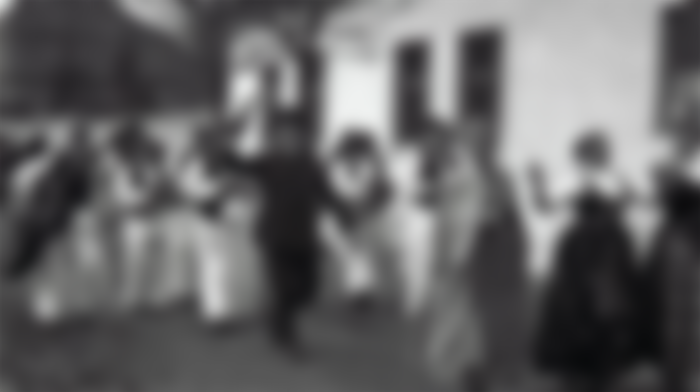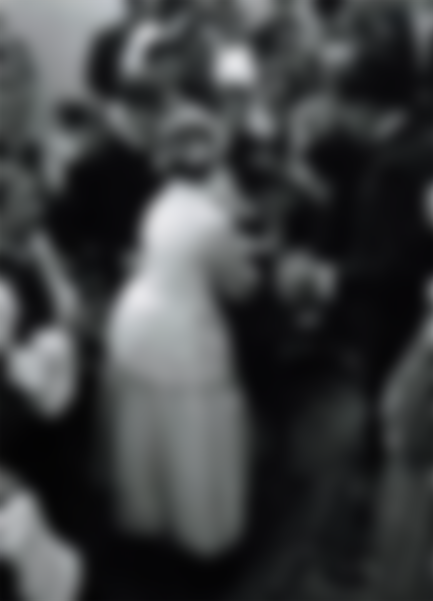Customs are traditionally established ways of behaving with symbolic features; inherent in a particular social community, and mark significant moments of human life and special occasions in the life of the community. Without customs, there are no solemn moments in the life of an individual and a family,

When I talk about Šokci, I mean the Croatian inhabitants of the Catholic faith who inhabit Šokadija, the part that stretches from Slavonski Brod and Đakovo to Županja, Vinkovci, Osijek, Valpovo and Našice and outside Slavonia in Bosnian Posavina, Baranja, Bačka and part of Srijem, and in the vicinity of Pécs in Hungary,
Like other customs, Šokci pay great attention to those wedding customs, the most important of which is the wedding, which is preceded by the choice of a spouse and engagement.
FINDING A MARRIED COUPLE:

As before, one of the goals today is to find a person with whom we will spend the rest of our lives, with whom we will share both good and evil, create a new family, have children to raise and take care of them. Today, everyone chooses a person who suits them. Young people are independent and free in this choice, but this has not always been the case.
In the past, parents usually chose instead of young people, ie young people were forced to spend the rest of their lives with them, regardless of whether they agreed with the choice. They lived in cooperatives where the elder had the main say and set the rules, including finding a married couple. The married couple was mostly from the same village or parish, rarely from another village. What was important was to find a suitable girl / boy who is able to work because a lot of work has been done, and manpower is needed at all times. In addition, property status was looked at. Wealthier people were looking for people like themselves because few wanted to share their heritage with someone who had nothing to contribute to the community.
The girl they chose for the daughter-in-law had to be rich, healthy and hardworking, and also her parents tried to marry her to a house where she would not be poor.
The young people often did not know each other, they were expected to accept the decision of the older ones without any objections.
The young man married when the family needed extra labor or when a particularly good opportunity arose, preferably a bridegroom. Care was taken to marry the older sisters and brothers first, and care was taken that the girl did not miss the opportunity and did not pass the most desirable age so as not to be a nuisance among the younger sisters.
As cooperatives disappeared, changes took place over time. The possibility for young people to participate in the choice of a married couple increased. Young people spent a lot of time working in the fields, tending cattle, helping the household, so socializing was limited.
Despite that, there were occasions when young people met, and these were village celebrations, fairs, important annual events, or holidays such as Christmas or Easter, dance parties, going to Mass…
The boys gave the girl gingerbread sticks at but when the boy bought and gave a gingerbread heart to the girl at- it was a sign of great love or the marriage itself was already discussed, and engagements soon followed.
ENGAGEMENT:

After the acquaintance and the decision to get married, the engagement followed. First they went to the girl's house to propose her hand to her father. The future groom was accompanied by one of the male family members, a father or an uncle, but most often it was women and the older ones. Sometimes successful mediation was rewarded. The rejection of the marriage offer in rural communities brought ridicule and humiliation. It was unusually important to conduct the first interrogation and arrangements discreetly and informally. This task belonged to women intermediaries or women from the young man's family, often to his mother, and less often to a male family member. It was said that they were going to a "ring" or "ringing" because it was about the engagement of two young people.
At engagements with an apple, money and a ring, the girl receives other gifts, useful and decorative textile items, jewelry, and often dishes or cakes.
This custom is still preserved today and is manifested at the wedding itself during the theft of the bride's shoe, which the godfather is obliged to repay.
WEDDING:

A wedding or wedding party is the most complex shocking custom. Immediately after the liberation from the Turks, the authorities sought to limit the number of guests and sought to ban luxury and high expenses. Despite the bans and penalties, the wedding party became more complex, more expensive, with more and more guests. "The border authorities have determined that every young man who intends to marry must undergo a medical examination and obtain a marriage license.
Boys married most often at 18 and girls at 17. When there was a shortage of boys due to the long war, girls would marry much older ones to young adults. The wedding would take place in the fall from September to November, i.e. the beginning of Advent, then from the New Year to Lent and after Easter in May and June. Girls differed from married women in clothing and hairstyle. Before marriage they wore a braid, and when they marry, the braid is no more; a scarf is worn.
The wedding lasted from one, three to five days, a week or more), depending on regional and local differences and the circumstances of each case.
Before, people invited those closest to them, they celebrated according to their abilities, and preparations would take a week. In the past, girls did not rent dresses (WEDDING DRESSES AS TODAY) but were given as gifts by the father-in-law or mother-in-law or wore the most formal clothes they have.
The wedding was held on a day that seemed happy, and that used to be Wednesday. From the groom we go to the godfather where he has lunch. From the godfather, the wedding procession goes to the bride's house, as they say today - "for the bride".
In front of her house, a humorous negotiation was taking place, that is, buying a bride.

The bride and groom take the girls out in front of the house, while the bridegroom, the old groom or the best man negotiates with the bride's brother or her cousin, if there is no brother, to buy the bride. Usually, two or three girls who are called "fake brides" are performed, followed by the bride herself, for whom the groom or godfather gives the agreed amount of money. We still find this custom in weddings today.

After buying the bride, the bride presents her father-in-law, godmother, and daughter-in-law with decorative textile handicrafts - "towels", followed by forgiveness and blessing before the bride's final departure from her parents' home. After that they go to church for the wedding.It used to be village carriages or on foot, today it is driven by cars.
Before the wedding, in front of the church, the bride puts towels on the godparents, the old groom, the bridesmaids,
It used to be the custom to give gifts to newlyweds at midnight when they donated up in front of all the wedding guests. This could take several hours.
Today this custom is no longer practiced. More often they will come across a dance with the bride who is paid or a classic gift or congratulation to the newlyweds at midnight during which they are given a gift.






sami troškovi koji netrebaju. Zamisli, da se dva puta vjenčaš...dupli troškovi. Bolje sa novcem iči oko svjeta.